The Quest for Microbialite Analogs to the South Atlantic Pre-Salt Carbonate Hydrocarbon Reservoirs of Africa and South America
HGS International Dinner Meeting talk September 10, 2012
By Stanley M. Awramik Department of Earth Science University of California, Santa Barbara, CA 93106
H. Paul Buchheim Department of Earth and Biological Sciences Loma Linda University,Loma Linda, CA 92350
The discovery of hydrocarbon reservoirs associated with lacustrine microbialites in pre-salt South Atlantic marginal basins of Brazil has fueled new research on microbially influenced carbonates. Oil discovered in the pre-salt of the Kwanza Basin off the coast of Angola may also be associated with lacustrine microbial carbonates. A Little is known with regard to lacustrine microbialiteshow they form, what controls where they form, factors that determine whether a biostrome or bioherm forms, how they develop into significant reservoir-size structures, factors that contribute to and influence their permeability and porosity, and what factors control their geometry, in particular their footprint. The importance of this knowledge is to make predictions with regard to constuctionof facies models that may allow the location of large, stratigraphically significant, lacustrine microbialite petroleum reservoirs in the subsurface.
Stromatolites (microbialites) are best known as living fossils. The most well known living stromatolites and microbial carbonates are marine and from Shark Bay, Western Australia, and the Bahamas. Much can be learned from these microbialites in terms of sediment-microbe interactions, though marine systems are significantly different from lacustrine systems in terms of their dynamics and time-scales. A few hundred lakes are known in which microbialites form. However, the microbialites are rarely extensive; they are usually small and localized. The search for suitable modern analogs to large, pre-salt, lacustrine microbial carbonate reservoirs leads us to what we call “the curse of the living dead”: There are none!.
Lakes have been pumping out microbialites for over 2.7 billion years. There are some ancient, microbialite analog-candidates to the pre-salt. Prominent among them is the Eocene Green River Formation of the western US and the Late Archean Meentheena Member of theTumbiana Formation of Western Australia. The Meentheena Member lakes system was huge; its microbialite-rich strata that crop out over a distance of 640 km in Western Australia. The microbialites are abundant and diverse; stromatolites dominate, and are organized as biostromes and >1-meter-high, elongate mounds (Figure 1).
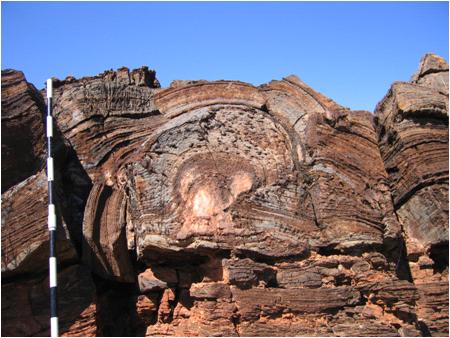
Figure 1: Large, domical stromatolite from the Late Archean Meentheena Member, Western Australia. Jacob’s staff is two meters long.
The biostromes are laterally extensive and traceable for tens of kilometers. The member, however, is thin, only about 50 meters thick, with a lithofacies association of ooids/flat-pebble-conglomerate, microbialite with laminated calcimicrite, and shale/siltstone that is repeated over 25 times in measured sections. The member was deposited in a balanced-fill lake system that had a low, lake-bottom gradient.
The Green River Formation, although smaller in extent at ~350 km, is much thicker, and contains what may be the richest record of lacustrine microbialites. These occur in several members. Stromatolites (Figure 2) dominate, but oncoids (Figure 3), thrombolites, and tufa-like microbialites (Figure 4) occur. Most microbialites occur in laterally extensive biostromes that have the facies association of ooids/flat-pebble-conglomerate,microbialite, and oil shale, that is similar to the Meentheena Member. The Green River also has fewer pronounced repetitive patterns of microbialite biostromes formed on a low gradient lake bottom. Some of these biostromes, as in the Meentheena Member, can be traced for tens of kilometers. Unlike the Meentheena Member, multi-meter-size bioherms occur (Figure 5) in theGreen River. The bioherms are composed of clusters of meter-scale, columnar and domical stromatolites andtufa. Bioherms occur in a facies association composed of stacked, 10-30 m-thick successions of oolite and grainstone, microbialites, wackestone, and carbonate mudstones that were deposited on relatively higher lake bottom gradients.
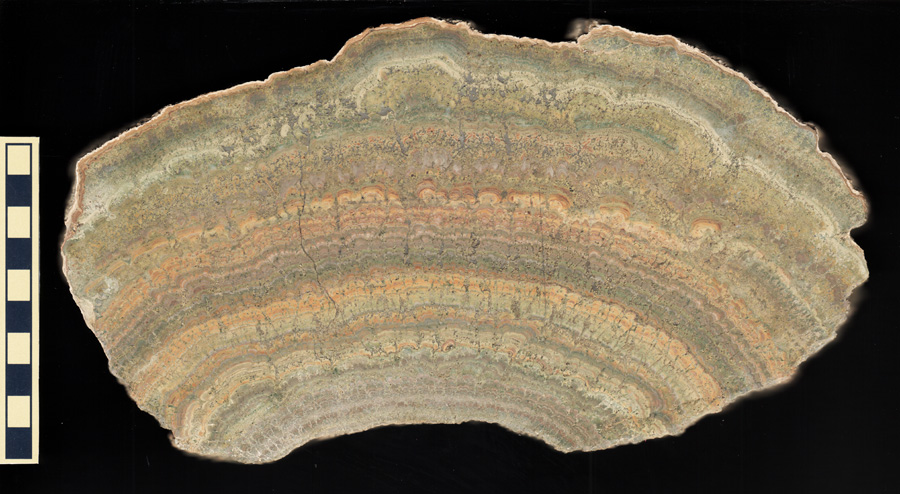
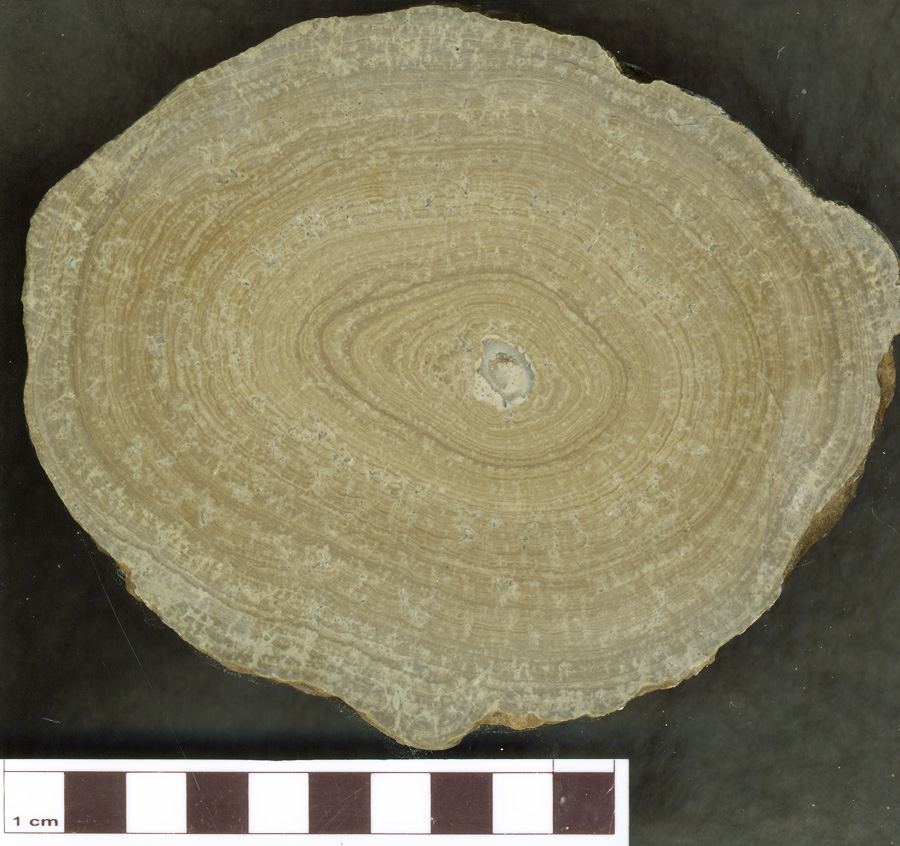
Figure 2: Cumulate stromatolite composed of laterally linked domes.
Eocene Green River Formation (Eocene), Laney Member, Delaney Rim,
Wyoming. Centimeter scale.
Figure 3: Oncoid from that formed during a flooding phase of the Green
River Formation (Eocene) from Fossil Lake, Six Mile Creek, Utah.
Centimeter scale.
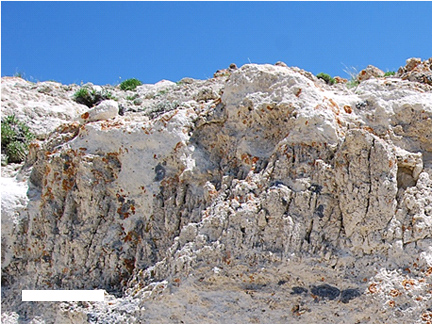
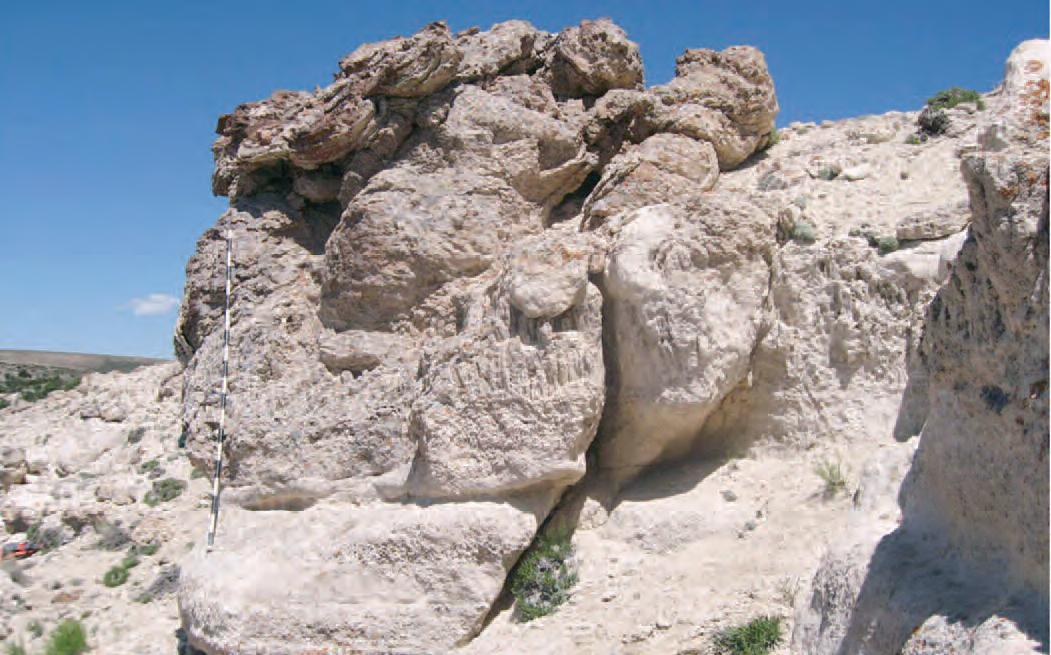
Figure 4 and 5 above
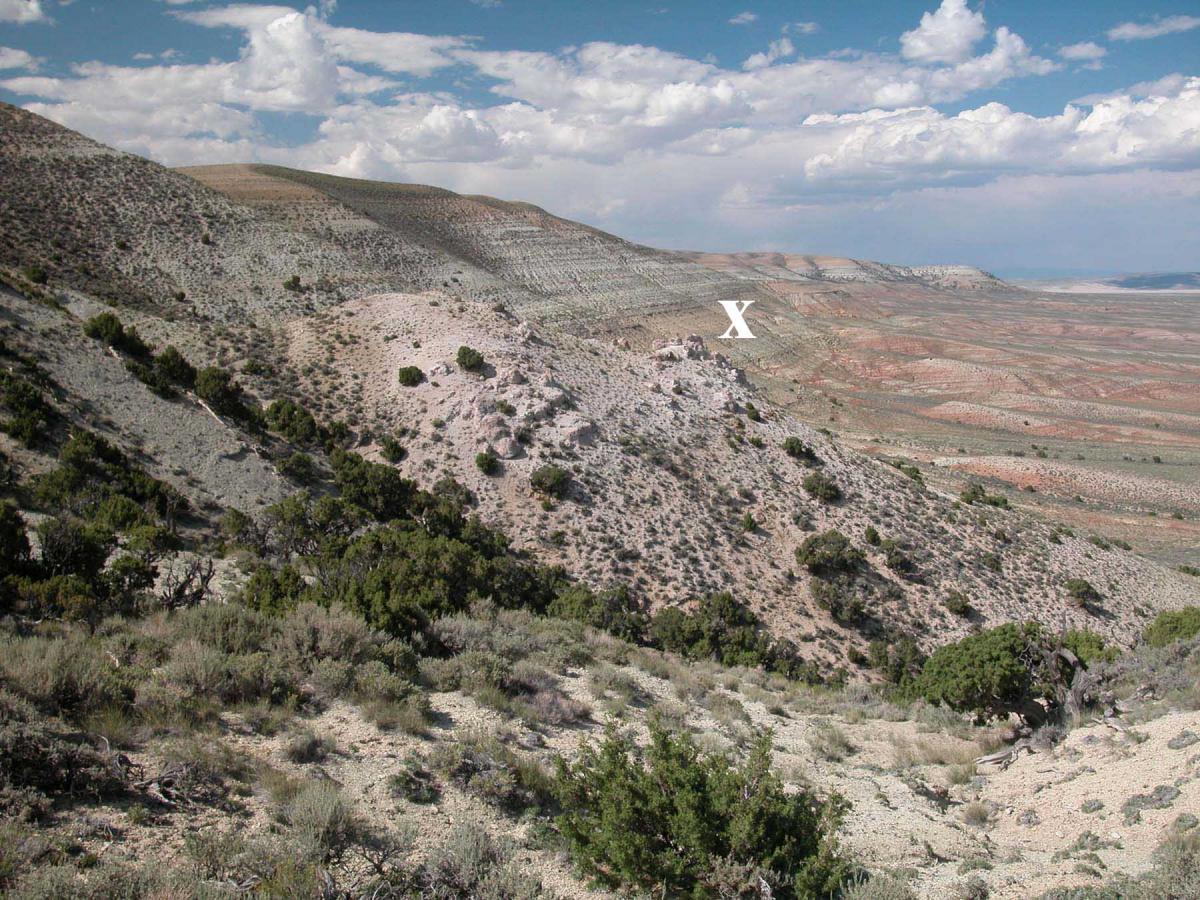
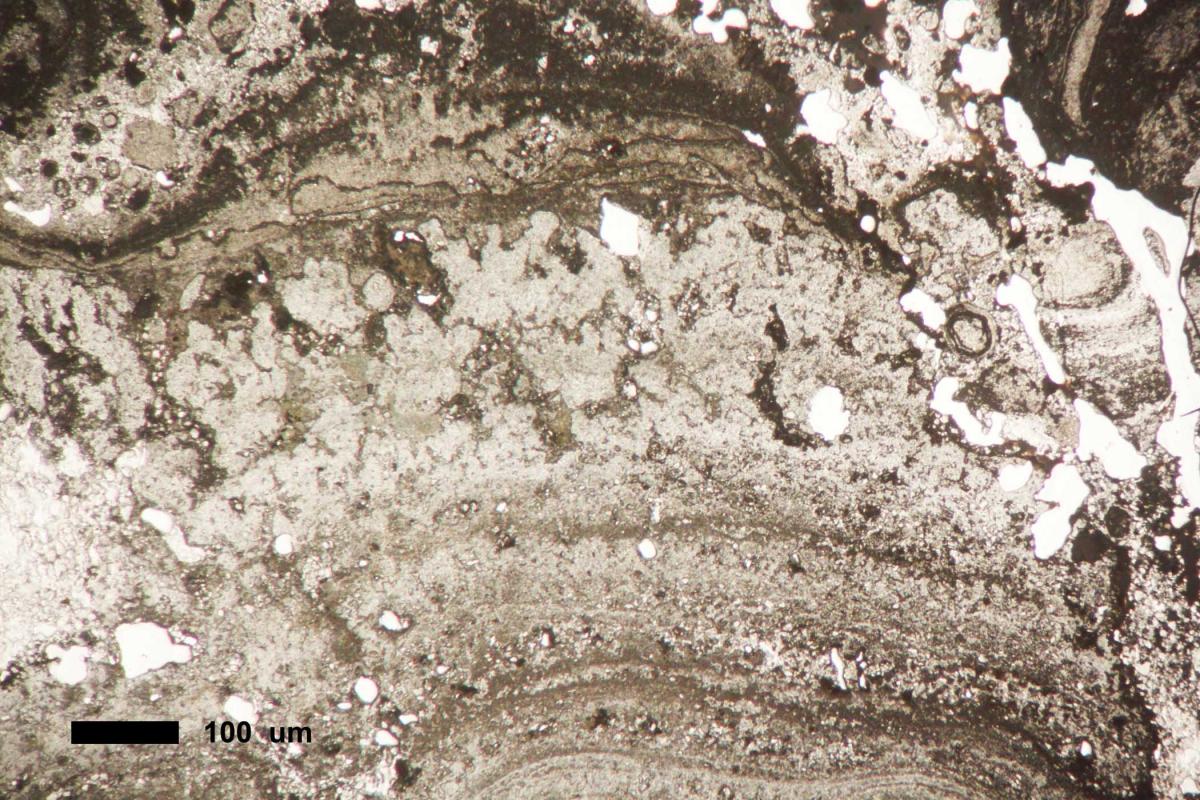
Figure 6 and 7 above
If one moves away from microbialites sensu stricto to a broader or sensu lato interpretation of microbialites that includes microbially influenced tufa and travertine, the Green River Formation becomes even more interesting. There are a number of occurrences of the tufa-like stromatolites and spring deposits (Figure 6) as well as structures (Figures 7 and 8) that have a strong resemblance to structures reported from the Santos Basin, Brazil. Laminated, crystalline, fan-shaped structures are also known from the Meentheena Member (Figure 9).

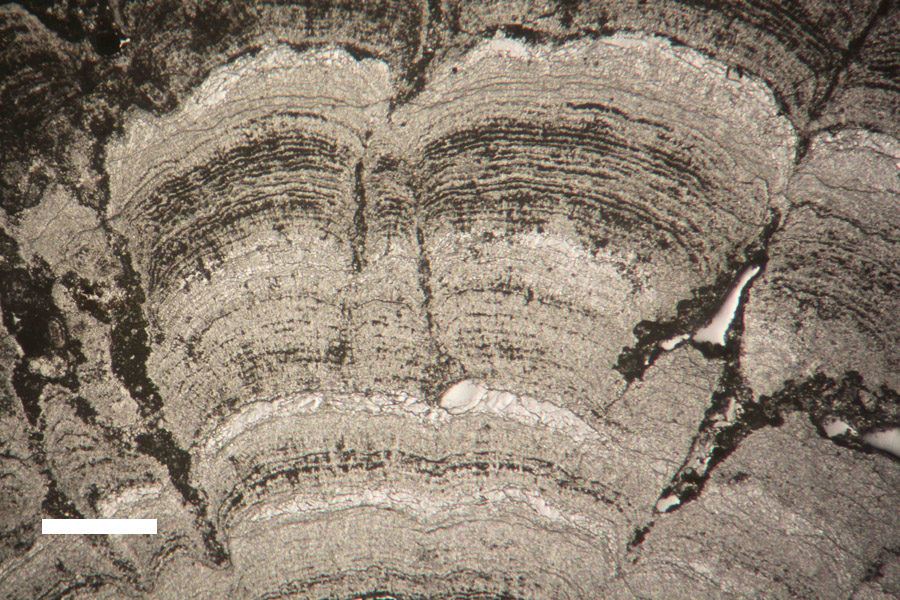
Figure 7 and 8 above
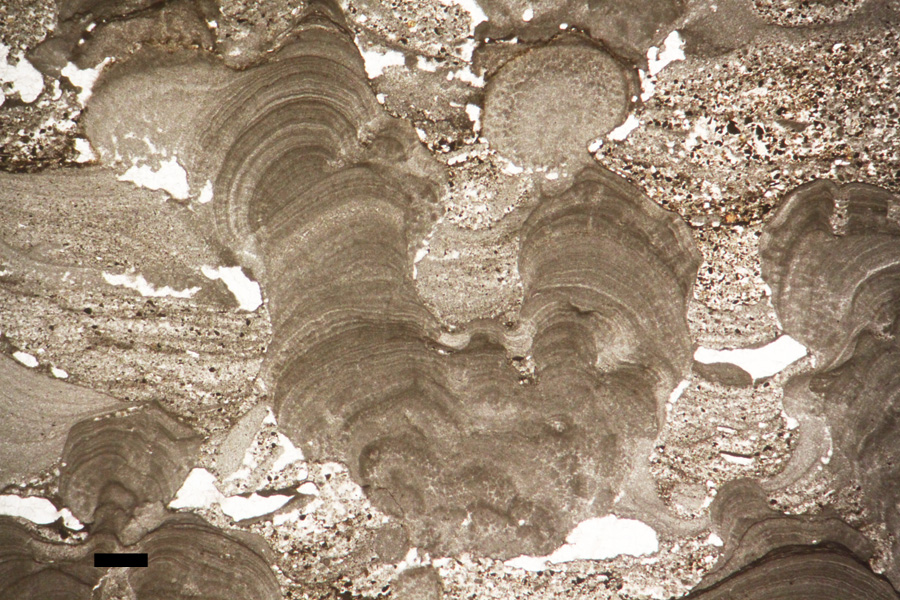
Figure 9
The Green River Formation is probably the best analog for the large lake systems that formed with the opening of the South Atlantic. Although not considered a rift basin, the physiographic nature of the Green River Basin is similar to the “sag” phase in that it was a very broad, rapidly subsiding basin, structurally hinged on the north and west side with significantly greater subsidence along reverse and thrust faults on the east and south sides of the Wind River and Uinta Mountains, respectively.
This structural style also occurs in the Uinta and Piceance Creek Basins, where thick successions of the Green River Formation were deposited as well. Here, volcaniclastics composed a significant part of sedimentation during deposition of the Laney Member, the last stage of deposition within the basin. Volcaniclastic-dominated sediment eventually filled the basin; as accommodation space waned, sedimentation rates of volcanic ash overwhelmed the system. Volcaniclastics are common as abundant tuff beds throughout the Green River Formation as well. Regarding volcaniclastics, the Green River Formation provides an excellent analog to study the context and paleoenvironmental significance of stevensite, a poorly understood clay mineral that occurs in the pre-salt lacustrine deposits.
About the authors
STAN AWRAMIK has been at UC Santa Barbara since 1974. His research has primarily involved microbialites and microbial fossils preserved in chert. Much
of his earlier work dealt with the pre- Phanerozoic with an eye to deciphering the early history of life. In an effort to better understand pre-Phanerozoic
microbialites, Awramik looked to nonmarine microbialites as a more appropriate analogue. This has resulted in the study of microbialites from lakes, springs, and
oceanenvironments up and down the geologic column.
H. PAUL BUCHHEIM has over 36 years experience with lacustrine depositional systems, sedimentology, stratigraphy, geochemistry, and paleontology that
includes a focused work on lacustrine stromatolites and microbialites. He has conducted detailed studies of microbialiteassociated lacustrine deposits in terms of
their stratigraphic and sedimentologic facies relationships, geochemistry, stratigraphic architecture, regional paleogeography, and sequence stratigraphic relationships.
This work has included studies on lacustrine systems in the Eocene Green River Formation of Colorado, Utah, and Wyoming; the Archean Tumbiana Formation of Western Australia; the Pliocene Furnace Creek Formation of Death Valley, California; and numerous other systems.
